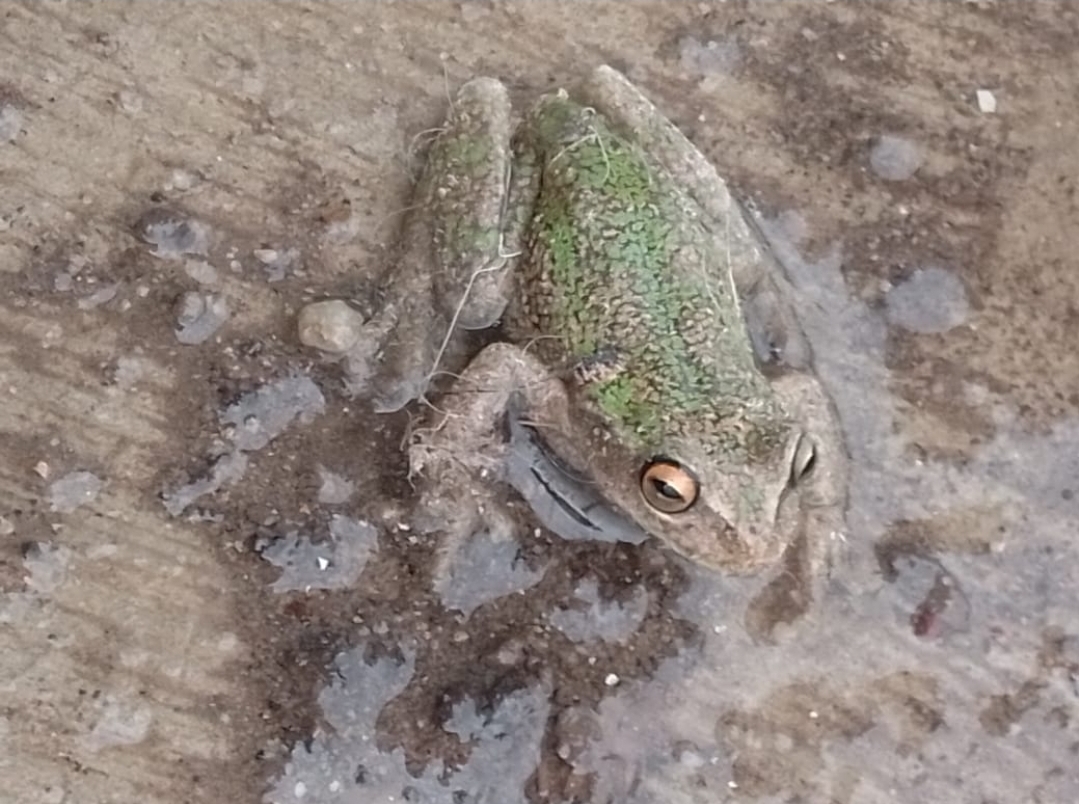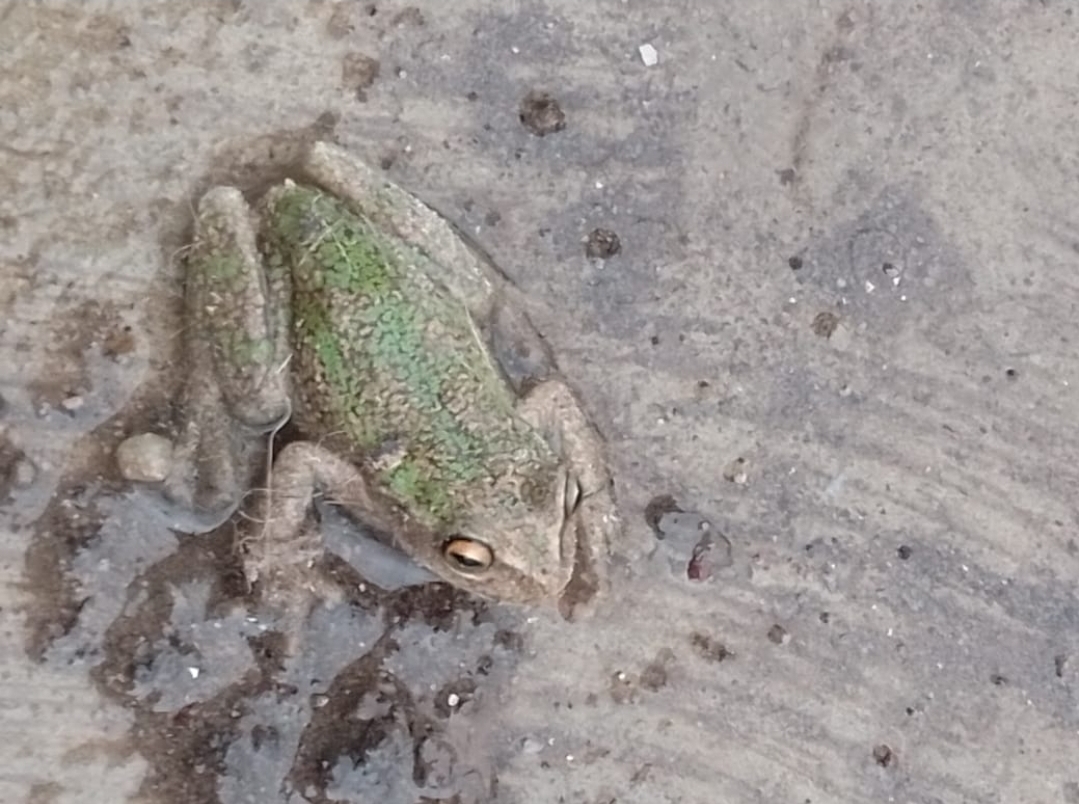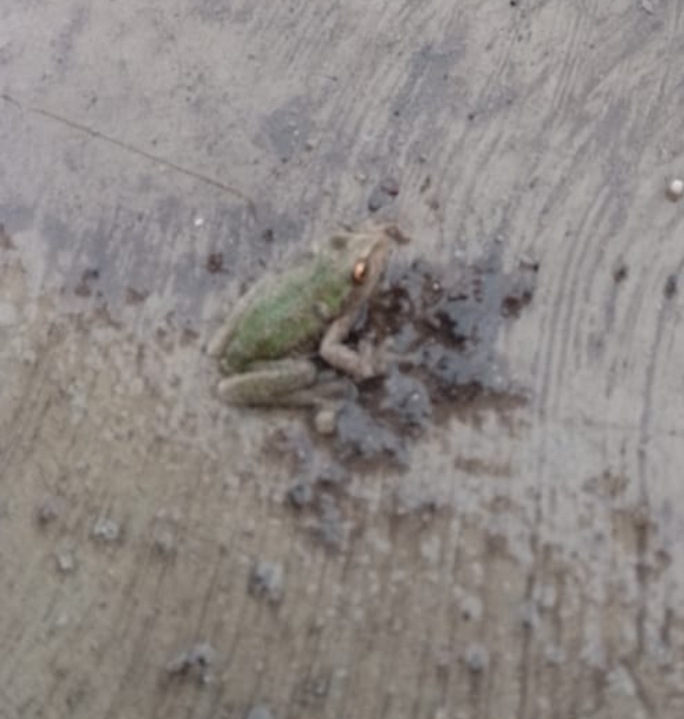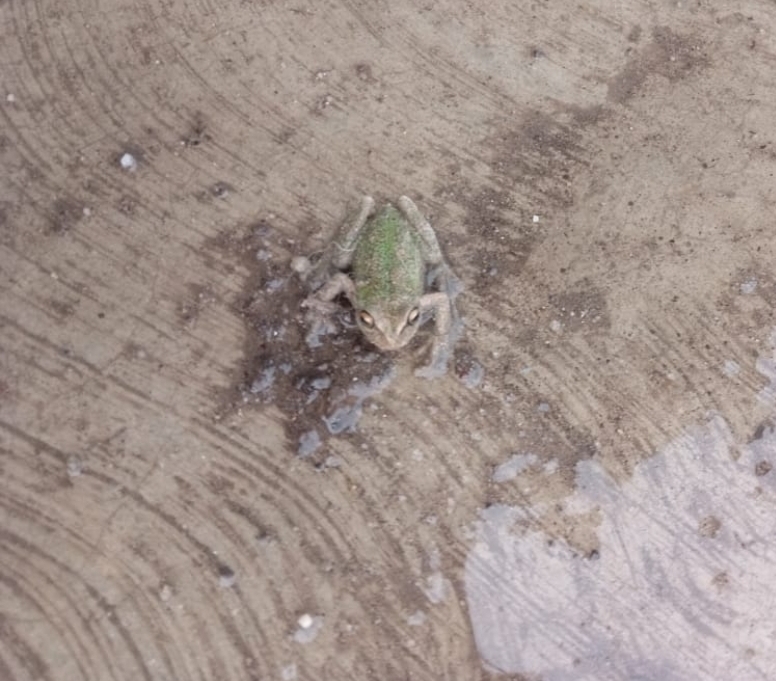
This article examines the biological, ecological and environmental effects of its expansion and suggests control measures to reduce its adverse effects.
Dear Readers, As I have always said, the unique feature of Osteopilus septentrionalis is that it is an anuran of the Hylidae family found in Cuba, the Bahamas and the Cayman Islands. This species was accidentally introduced to Florida in the 1920s and has since become dominant and widespread throughout the southeastern United States.

Biology and Morphology
Osteopilus septentrionalis is distinguished by its size compared to other tree frogs, its length reaches 10 cm to 13 cm. Their color ranges from green to brown and they often have unusual structures that give them a beautiful appearance.
I knew that this species had sticky discs on its toes, which allowed it to climb vertically and spend most of its life in the forest. Its diet is opportunistic and includes insects, other amphibians and small vertebrates.

This species is known for its adaptation to a variety of habitats, from forests and swamps to cities. Its ability to reproduce in a variety of water bodies, including temporary and man-made water bodies, facilitates its expansion.
Osteopilus septentrionalis displays aggressive behavior in its territory, chasing away terrestrial predators, their eggs and larvae. Known as the Cuban tree frog, Osteopilus septentrionalis has a well-developed adaptive system that contributes to its success as an invasive species.
Reproduction and development
Reproduction of seven-bone caterpillars usually occurs during the rainy season, when water is temporarily available. In tropical areas it can occur throughout the year, but in warmer areas it is limited to the summer.

Males attract females with a constant call. These calls are usually made at night and are important for mating because it attracts females by the intensity and frequency of the call.
Females spawn in a variety of water bodies including ephemeral ponds, ponds, canals and other shallow bodies of water. Compatibility with different types of water is an important advantage of this species.
Females can lay hundreds of eggs in one cycle. The eggs sink to the surface of the water or attach to floating grass. A large number of eggs increases the chances of survival of the offspring.
The eggs hatch in a few days depending on the water temperature. The larvae or pupae emerge and begin to develop in the water. Tadpoles are omnivorous and feed on algae, organic matter and small invertebrates.
Importantly, the development time from tadpole to adult varies and generally occurs within a few weeks. Tadpoles go through a process of metamorphosis, in which they grow legs, a tail, and eventually become a frog. Young frogs reach sexual maturity in about a year, depending on environmental conditions and resource availability.
Heptaphyllum reproduces efficiently and flexibly, achieving great success in proper reproduction and allowing the expansion and colonization of new habitats.
Environmental impact The introduction of Osteomyces heptaste has had devastating effects on native amphibians. Its competition for resources and prey has led to a decrease in local biodiversity. In addition, its presence can modify trophic changes in the ecological structure of the community. Studies show that there is a significant impact on protected areas and natural resources where there are a large number of endemic species.
Osteopilus septentrionalis is a clear example of the challenges that an invasive species can pose in a new environment. A thorough understanding of its biology and ecology is essential to developing effective management strategies. Continued research and international cooperation are needed to reduce the impact of this invasive frog and protect biodiversity.
All photos were taken with my Samsung A23
Bibliographic reference
Osteospilus septentrionalis. Guardian of environmental health by Jose Trujillo, Onelio Carballo, Yoesnai Sais, 2014.
Molecular phylogeny and biogeography of West Indian frogs of the genus Osteopilus. for Heinicke, M. P., & Hedges, S. B, 2009.
Family Farms and the Conservation of Agrobiodiversity in Cuba // Food Security and Nature for Urbano Fra Paleo, Leonor Castiñeiras, 2023.
CUrious to know which species are declining with this frog's introduction!
Greetings, yes, this is the unique case regarding this species.
Thanks for your contribution to the STEMsocial community. Feel free to join us on discord to get to know the rest of us!
Please consider delegating to the @stemsocial account (85% of the curation rewards are returned).
Thanks for including @stemsocial as a beneficiary, which gives you stronger support.